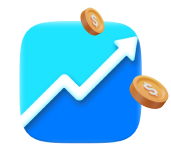- Chart
- Upturn Summary
- Highlights
- About
Principal Active High Yield ETF (YLD)

- BUY Advisory
- SELL Advisory (Profit)
- SELL Advisory (Loss)
- Profit
- Loss
- Pass (Skip investing)
 Stock price based on last close
Stock price based on last close (see disclosures)
- ALL
- 1Y
- 1M
- 1W
Upturn Advisory Summary
12/12/2025: YLD (1-star) is currently NOT-A-BUY. Pass it for now.
Analysis of Past Performance
Type ETF | Historic Profit 16.43% | Avg. Invested days 101 | Today’s Advisory PASS |
Upturn Star Rating  | Upturn Advisory Performance | ETF Returns Performance |
Key Highlights
Volume (30-day avg) - | Beta 0.73 | 52 Weeks Range 17.65 - 19.36 | Updated Date 06/29/2025 |
52 Weeks Range 17.65 - 19.36 | Updated Date 06/29/2025 |
About Principal Active High Yield ETF
Exchange NYSE ARCA | Headquaters - | ||
IPO Launch date - | CEO - | ||
Sector - | Industry - | Full time employees - | Website |
Full time employees - | Website | ||
The fund is an actively managed exchange-traded fund ("ETF") that seeks to achieve its investment objective by investing, under normal circumstances, at least 80% of its net assets, plus any borrowings for investment purposes, in below-investment grade (commonly known as junk or "high yield") fixed income securities, such as bonds and bank loans. It invests in U.S. treasury securities, investment grade bank loans (also known as senior floating rate interests), and preferred securities.

Note: This website is maintained by Upturn Corporation, which is an investment adviser registered with the U.S. Securities and Exchange Commission. Such registration does not imply a certain level of skill or training. Investing in securities has risks. Past performance is no guarantee of future returns. No assurance is provided as to any particular investment return, and you may lose money using our services. You are strongly advised to consult appropriate counsel before making any investments in companies you learn about through our services. You should obtain appropriate legal, tax, investment, accounting, and other advice that takes into account your investment portfolio and overall financial situation. You are solely responsible for conducting due diligence on a potential investment. We do not affect trades for you. You will select your own broker through which to transact. Investments are not FDIC insured, they are not guaranteed, and they may lose value. Please see the Privacy Policy, Terms of Use, and Disclosure for more information.
 Home
Home 
